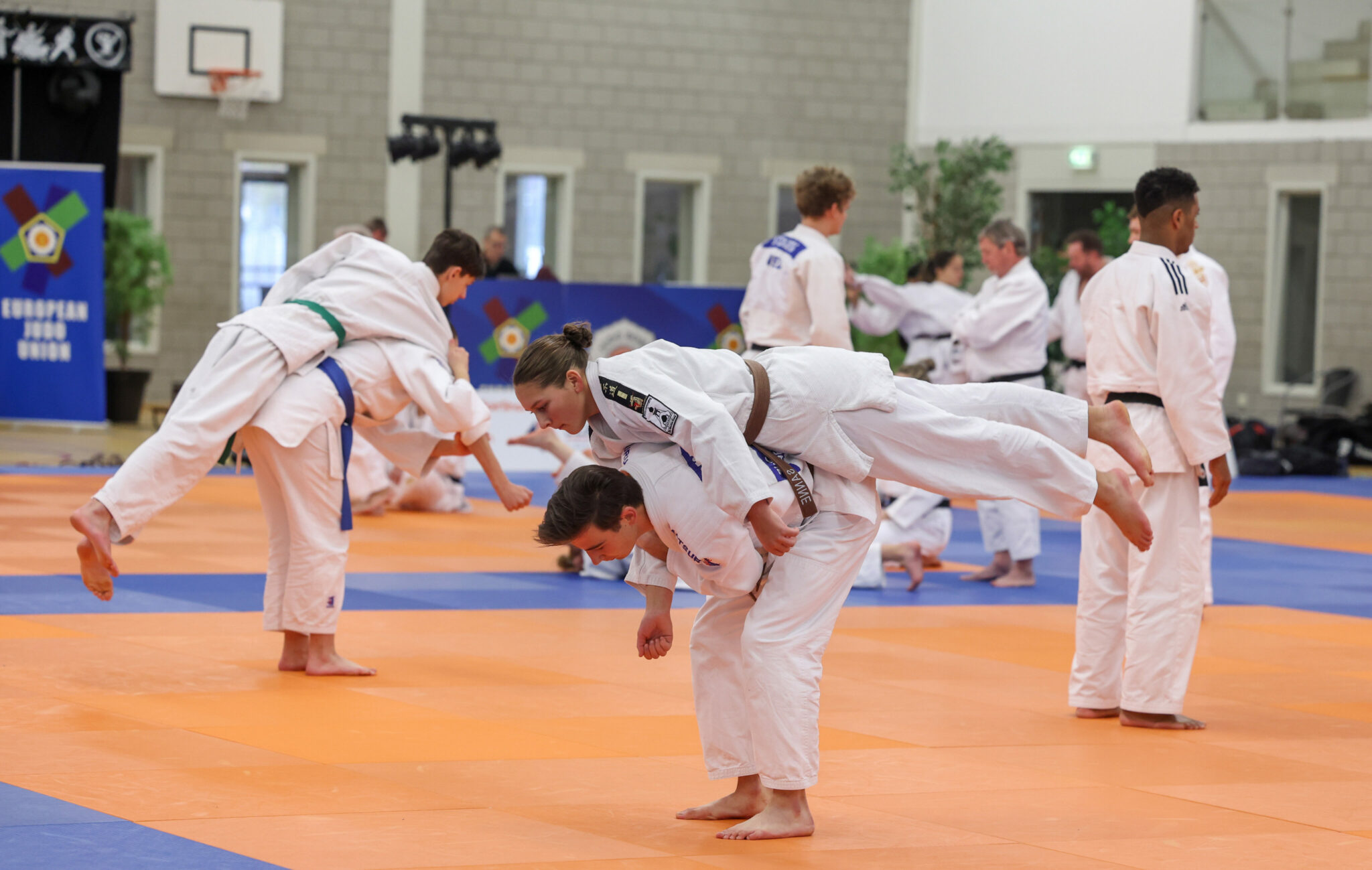Day two of the EJU Get Together event features the adaptive kata participants. 22 pairs will demonstrate their knowledge of ‘form’ this afternoon. Adapted Judo rules for Kata were created with the aim that every judoka, regardless of ability, could get the opportunity to participate equally in Kata tournaments. To ensure a fair and meaningful Kata competition, judokas are assigned a Kata level. These levels differ from the Adapted Judo levels for competition. There are 3 levels and 4 categories and there is a distinction between “levels” and “categories”.
- A level is assigned to a judoka and describes his/her proficiency in judo.
- A category is a competition type. For instance, some judokas have a disability that requires a more extensive modification to an existing Kata, or Kata bespoke to their disability. Proficient Adaptive Kata judoka can compete under regular/mainstream Kata rules.
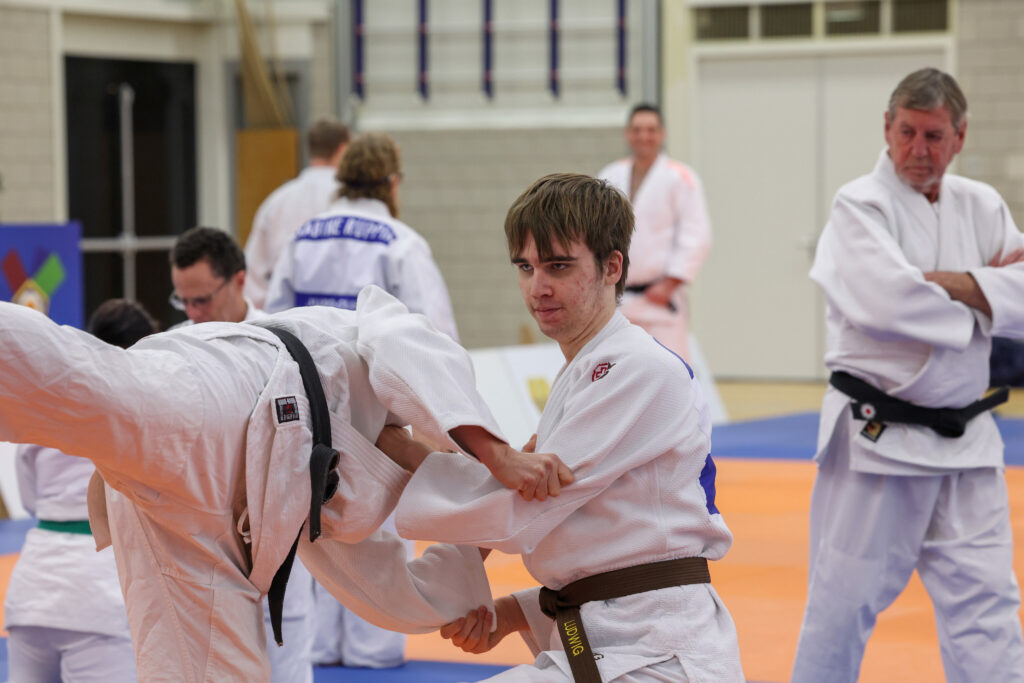
Levels
Level 1
This is a judoka with a minor social, mental, or physical disability. This judoka has a good feel of judo and is aware of the significance of Kata. Furthermore, this judoka profoundly understands his disability and adeptly manages its constraints. On a technical level, this judoka is on par with his mainstream colleagues.
Level 2
This judoka has a social, mental, or physical disability. This judoka has a reasonable feel for judo and requires a large amount of explanation to grasp the meaning of Kata. Under the guidance of his coach, trainer, and/or uke, this judoka exhibits the capability to manage his disability effectively. Training alongside mainstream judoka requires additional adjustments.
Level 3
This judokas impairment requires increased guidance and explanations to perform Kata. Training in Adapted classes or, training alongside mainstream judokas takes a lot of adjustments.
Categories
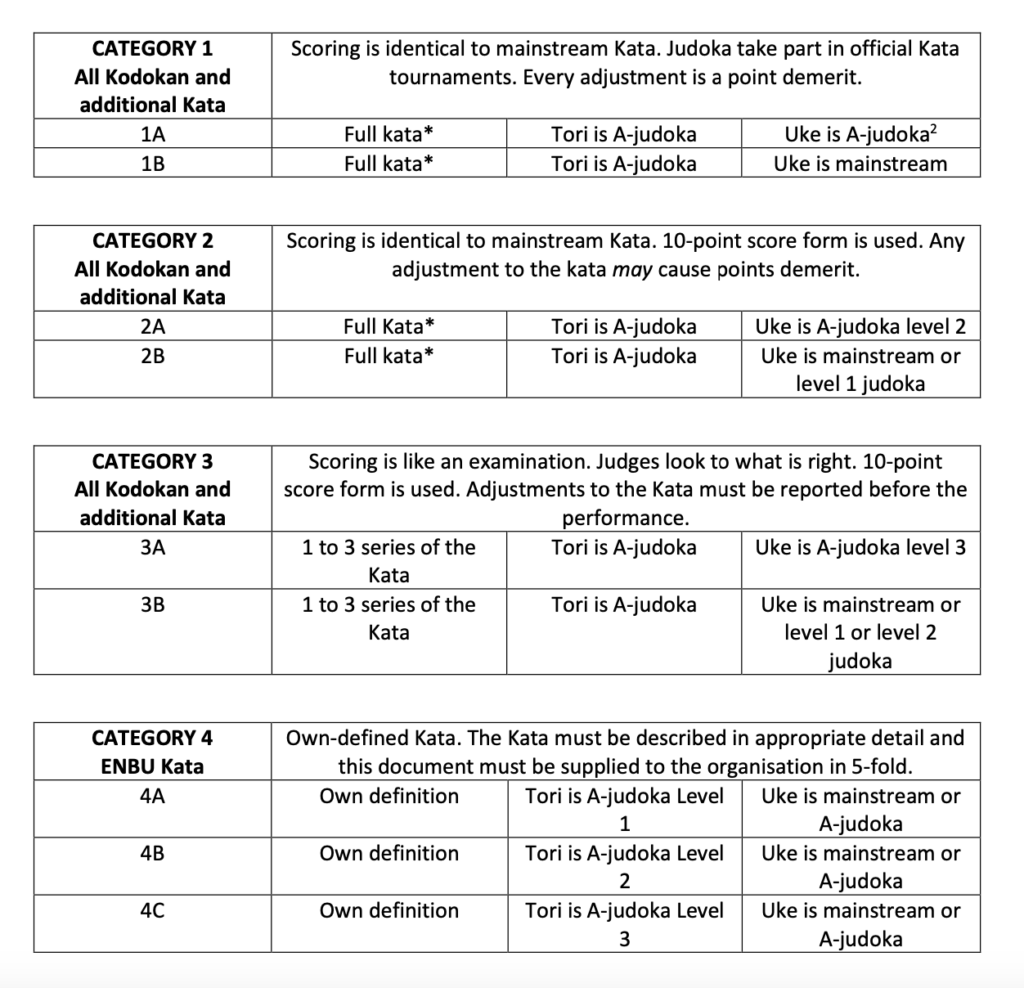
*For Categories 1 and 2, Full Nage Nage-no-Kata and Full Adapted Nage-no-Kata include the first three series.
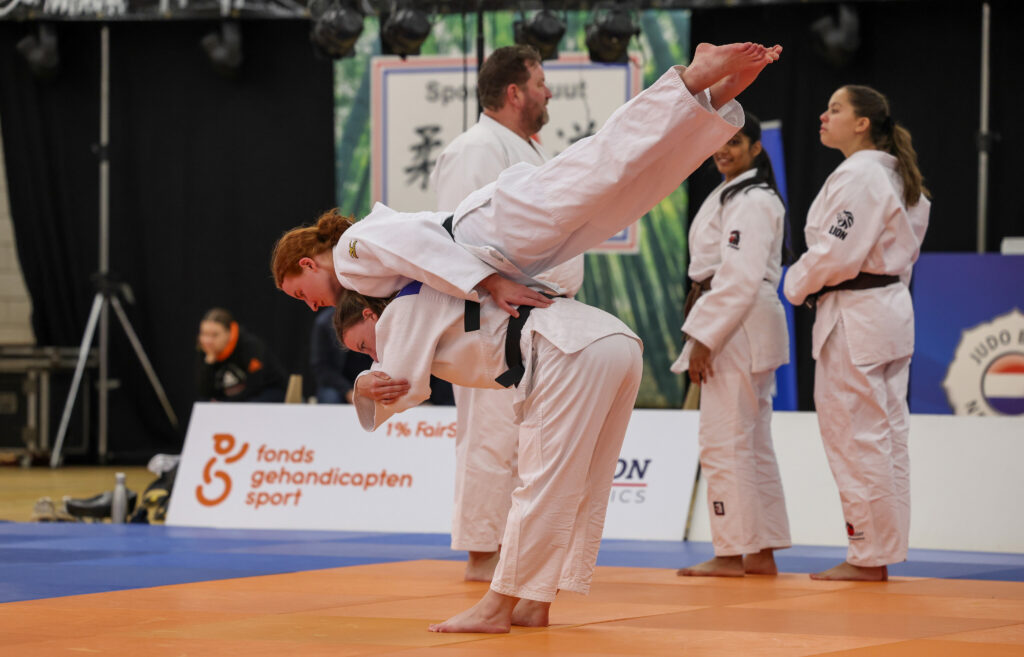
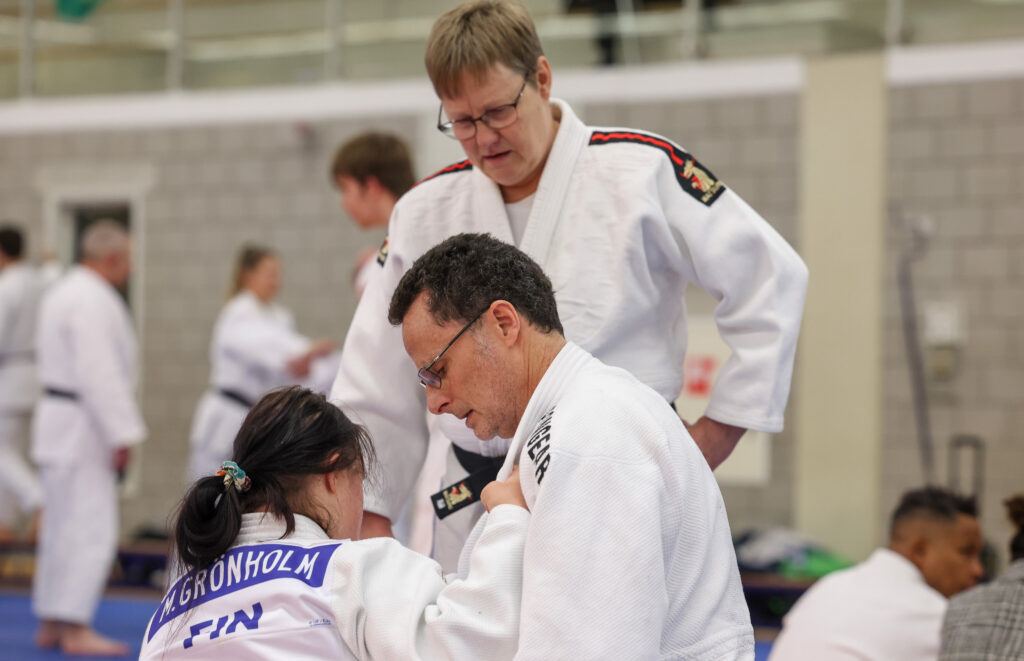
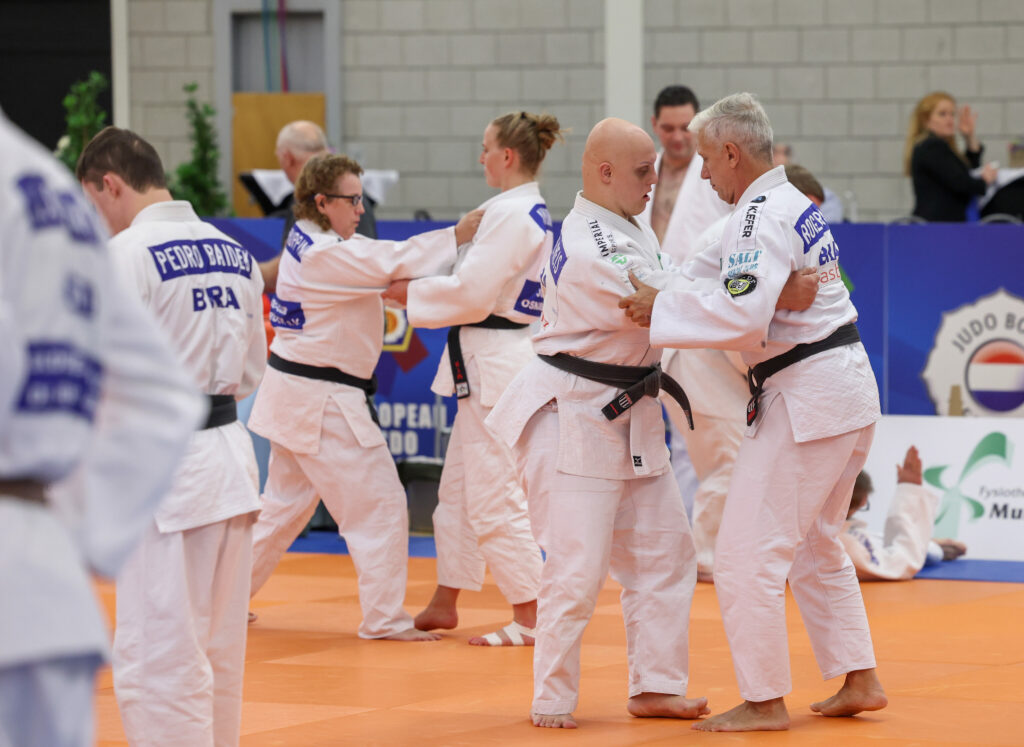
Athletes are able to enter in the following official Kodokan Kata groups:
- Nage-no-Kata (first three series)
- Adapted Nage-no-Kata (first three series)
- Katame-no-Kata
- Ju-no-Kata
- Kime-no-Kata
- Kodokan-Goshin-Jutsu
Additional groups:
- Itsutsu-no-Kata
- Itsutsu-no-Kata wheelchair
- Koshiki-no-Kata
Special ENBU Kata:
- A Kata defined especially for the type of disability of the judoka. The referees need to know what they are about to see and judge. Therefore, a description of the shown Kata must have been provided to them before.
- A Kata with adjustments in the essence of the Kata or where techniques are changed for another technique is not an official Kata anymore; hence, it falls into the Special Kata category. Like Kodomo-no-Kata or Nage-waza Kata.
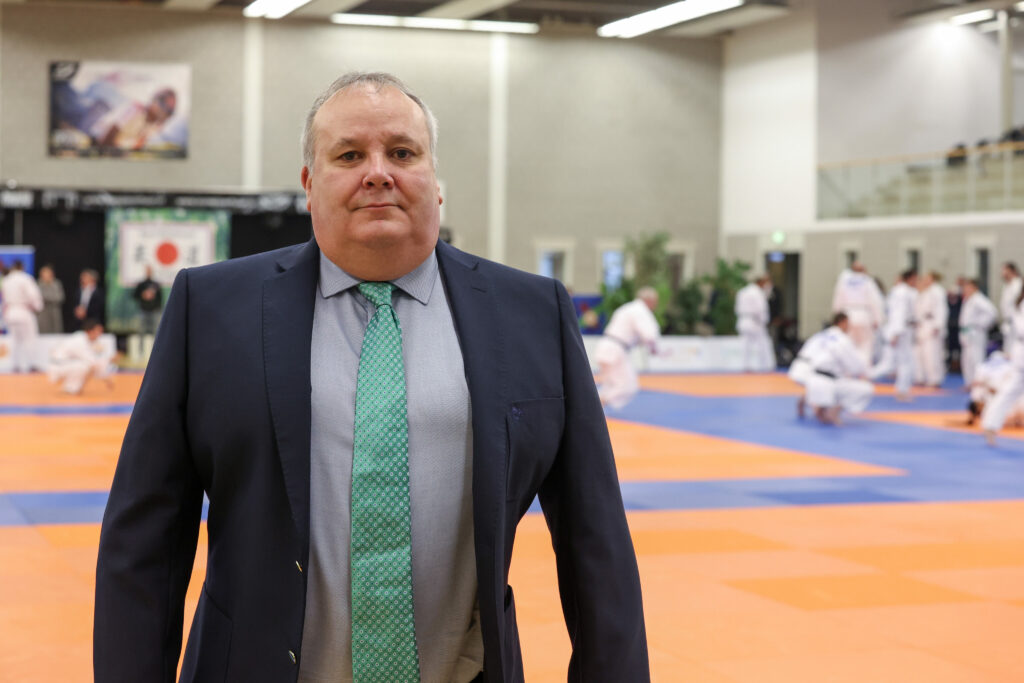
EJU Education Director, Mr. Ronnie SAEZ, is looking forward to seeing the adaptive kata tournament this afternoon whilst reflects on yesterday’s happenings.
I think it has been a great experience for the EJU and for adaptive judo. We worked hard for a year to come up with the set of rules that were applied yesterday. Everybody enjoyed a fantastic tournament and I think it is an area of judo that EJU should drive forward because it brings immense benefits to the participants and really projects on judo as a sport.
Today I am really looking forward to the kata competition to look at the result of all the work adaptive athletes put into this kata and to this standard. Again, it is a fantastic outlet for judo and for adaptive players who cannot, or wishes not to, partake in shiai and mainstream events. They can work in kata and improve their life through judo.
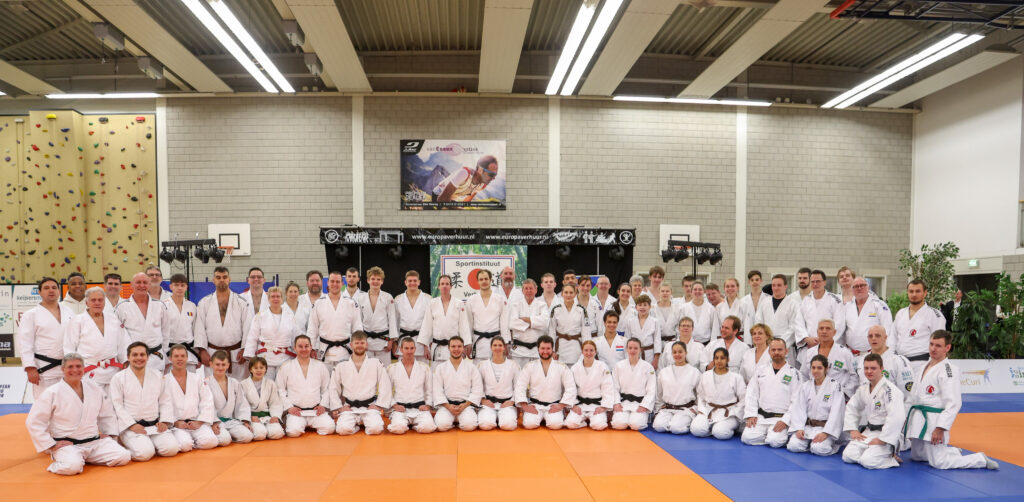
Author: Szandra Szogedi



